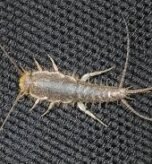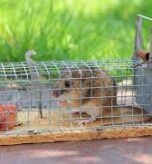Introduction: The Unsettling Truth About a Baby Cockroach
Discovering a baby cockroach in your living space can be an alarming experience. Beyond their unpleasant appearance, these pests carry various germs that pose significant health risks. The presence of these tiny insects, known as nymphs, serves as a powerful indicator of an active breeding ground and a potentially larger infestation. Nymphs tend to remain close to their hiding spots where they can access essential resources like food and moisture.
The implications of finding even one baby cockroach extend beyond a mere nuisance. Their remarkable capacity for rapid reproduction means a small issue can quickly escalate into a pervasive, full-scale problem. Such an uncontrolled infestation can significantly compromise the hygiene and comfort of your home, demanding prompt and decisive action. This comprehensive guide provides a detailed understanding of baby cockroach infestations, covering everything from accurate identification to effective elimination strategies and long-term prevention.
What Does a Baby Cockroach Look Like? A Guide to Identification
Accurate identification of a baby cockroach, or nymph, is the first step in effective pest management. While these immature cockroaches share general characteristics, they also have species-specific variations.
General Characteristics of Nymphs
A baby cockroach is typically small, often measuring only a few millimeters. They possess an oval-shaped body and prominent antennae. A key distinguishing feature is their lack of wings, which develop only as they mature into adults.
Immediately after hatching, nymphs are white but quickly darken to their species’ characteristic color. As they grow, they molt several times, shedding their exoskeletons. Finding these discarded “cast-off shells” is a definitive sign of an active pest issue.
Identifying Specific Nymph Species
Differentiating between various species of baby cockroach is critical, as it influences the most effective treatment methods.
- German Cockroach Nymphs: Among the smallest to infest homes, these nymphs have a light brown color with two prominent dark lines running down their back. They are generally darker than their adult counterparts and can grow up to 12mm.
- American Cockroach Nymphs: Significantly larger, these nymphs transition from white to a reddish-brown hue as they mature. Their bodies often exhibit a banded appearance and are more rounded than mature adults.
- Smoky Brown Cockroach Nymphs: These nymphs are dark, beginning as white, then turning black, and finally becoming brown. They feature a unique white segment just before their midsection, a mark that fades with age.
- Brown-Banded Cockroach Nymphs: These smaller nymphs have a dark brown body with two distinctive light-colored bands running across their abdomen.
- Australian Cockroach Nymphs: Similar to the American baby cockroach, these nymphs are reddish-brown but are distinguished by a pattern of light yellow spots.
Distinguishing a Baby Cockroach from Other Pests
People often misidentify other pests, leading to ineffective treatment.
- Bed Bugs: While both are small, a baby cockroach has an oval body, whereas bed bugs resemble an apple seed. Bed bugs are parasites found primarily in sleeping areas.
- Beetles: Beetles have a hard, shell-like exoskeleton and are generally found outdoors.
- Crickets: You can easily identify crickets by their long hind legs adapted for jumping and their distinctive chirping sounds.
- Water Bugs: Significantly larger than most cockroaches, water bugs have paddle-like legs for swimming and live near outdoor water sources.
For definitive identification, consult professional pest control services to recommend tailored solutions.
Signs of an Active Infestation: Beyond Just Seeing a Nymph
The presence of a baby cockroach strongly indicates an active infestation. While nymphs stay hidden, several other signs can confirm an ongoing problem.
- Increased Sightings: If you frequently observe cockroaches, especially during the day, their hiding spots are likely overcrowded due to a high population.
- Fecal Droppings: Cockroach droppings resemble small specks of coffee grounds or black pepper. You will typically find them near nesting sites or along their travel paths.
- Egg Casings (Oothecae): Finding these protective capsules is a definitive sign of breeding. Cockroaches deposit oothecae in concealed areas, and they are large enough to be seen with the naked eye.
- Musty Odor: A strong, unpleasant musty odor can signal a substantial cockroach population. This smell becomes more pronounced as the infestation grows.
The Hidden Dangers: Why Baby Cockroach Infestations are a Serious Problem
A baby cockroach infestation represents a serious threat to hygiene, health, and well-being.
Alarming Reproductive Capacity
Cockroaches are prolific breeders, which can rapidly turn a minor presence into a severe infestation.
- German Cockroach: A single female can produce up to 320 offspring in her lifetime, with nymphs maturing in just two months. This rapid cycle allows the population to explode.
- American Cockroach:https://edis.ifas.ufl.edu/publication/IN298: A female produces up to 160 offspring. Although their nymphs take longer to mature, they are larger and more resilient.
- Smoky Brown Cockroach: One female can give rise to nearly 480 young ones over time.
- Brown-Banded Cockroach: One female can produce up to 252 offspring. Their preference for dry, hidden locations means you may not notice an infestation until it is severe.
Significant Health Risks
Cockroaches, even in their nymph stage, pose substantial health threats.
- Disease Transmission: They carry and spread bacteria like Salmonella and E. coli, which can cause food poisoning and other illnesses by contaminating food and surfaces.
- Allergen Production: Cockroaches produce potent allergens in their saliva, feces, and shed skins. These allergens can trigger asthma and allergic reactions, especially in children and older adults.
- Psychological Impact: Living with a cockroach infestation can be profoundly distressing, inducing stress, anxiety, and sleeplessness. The constant fear of contamination and the difficulty of eradication create a significant psychological burden.
Battling the Nymphs: Effective Elimination Strategies
Addressing a baby cockroach infestation requires a combination of diligent home remedies and professional-grade products.
DIY Home Remedies (Safer Alternatives)
These methods offer safer options for initial or mild infestations.
- Boric Acid Mixture: Boric acid is highly effective. Cockroaches ingest the powder during grooming, which poisons them. To prepare, mix one part boric acid, one part flour, and one part sugar. Apply a fine, barely visible layer in active areas, but keep the mixture away from pets and children.
- Baking Soda and Sugar: Sugar attracts the cockroaches, and baking soda causes a fatal gas buildup when ingested. Sprinkle a small amount of an equal-parts mixture in areas with cockroach activity.
- Essential Oil Spray: Oils like peppermint, lavender, and eucalyptus are natural deterrents. Fill a spray bottle with 1 cup of water and add 10-15 drops of essential oil. Spray in areas where roaches hide.
- Soap and Water Solution: This method works as a contact killer. Mix liquid soap and water in a spray bottle and spray directly onto visible cockroaches to suffocate them.
- Citrus or Cucumber Peels: Cockroaches dislike the scent of citrus and cucumbers. Scatter fresh peels in active areas as a simple and safe deterrent.
Advanced DIY / Professional-Grade Products
For more effective and long-lasting control, professionals often recommend these products.
- Baits: Products like Advion gel bait contain slow-acting chemicals. Roaches consume the bait and carry the poison back to their nest, killing other roaches.
- Insect Growth Regulators (IGRs): IGRs like Gentrol and NyGuard are crucial for long-term control. They disrupt the life cycle of a baby cockroach, preventing nymphs from maturing into reproductive adults.
- Insecticides: You can apply targeted insecticides like Alpine WSG or Specter SC as sprays or dusts directly into cracks and crevices where roaches congregate.
- Diatomaceous Earth (Food Grade): This natural powder dehydrates and abrades the cockroach’s exoskeleton. Dust it around baseboards and drains.
Setting Traps
Sticky traps help monitor cockroach activity and capture both nymphs and adults. Placing them in kitchens and bathrooms helps gauge the extent of the infestation.
Crucial Warnings – What to Avoid
- DO NOT use “bug bombs”: These products are largely ineffective. They kill only a few visible insects while pushing the rest of the infestation deeper into walls, making the problem worse.
- Do not immediately trash electronics: Cockroaches hide in the warmth of electronics. Instead of discarding them, unplug devices overnight to cool them down and place gel bait near vents.
Prevention: Making Your Home Unattractive for Roaches
Even after eliminating an infestation, sustained prevention is paramount.
- Rigorous Cleaning: Deep clean all surfaces, especially under appliances. Store all food in tightly sealed containers. Dispose of garbage daily.
- Moisture Control: Fix any leaks promptly. Use dehumidifiers in damp areas and keep sinks dry.
- Sealing Entry Points: Use caulk to seal gaps around windows, pipes, and cracks in walls.
- Reduce Clutter: Minimize clutter, especially cardboard boxes, where roaches love to nest.
When to Call the Professionals
While DIY efforts can work, some situations require professional intervention.
Recognizing the Need for Experts
If you continue to see cockroaches after trying home remedies, or if the population is overwhelming, it’s time to seek expert help for baby cockroach elimination.
Integrated Pest Management (IPM)
Professionals use Integrated Pest Management (IPM), a comprehensive process focused on removing pests and preventing their return.
Key IPM components include:
- Thorough Inspection: Experts identify hotspots, nesting sites, and entry points.
- Sealing Openings: They permanently seal cracks and crevices to keep pests out.
- Targeted Treatments: Professionals strategically deploy specialized baits, IGRs, and boric acid in hard-to-reach areas.
- Multiple Visits: Eradication often requires multiple visits to break the cockroach life cycle.
Landlord/Tenant Rights
In many jurisdictions, landlords must provide a pest-free environment. Tenants should promptly inform their landlords of an infestation. For multi-unit buildings, treating the entire building simultaneously is critical for effective eradication.
Benefits of Professional Services
- Expert Analysis: Professionals accurately identify the species and severity of the infestation.
- Customized Plans: They develop tailored treatment plans for your specific situation.
- Advanced Methods: Experts use products and techniques that are more effective than over-the-counter solutions.
- Guaranteed Results: Many services offer warranties and follow-up visits to ensure complete eradication.
Conclusion: Reclaiming Your Pest-Free Home
Knowing how to identify and effectively treat a baby cockroach is crucial for maintaining a hygienic home. By recognizing the early signs, implementing proactive prevention, and using the right treatments, homeowners can stop these tiny intruders from escalating into a major problem and reclaim their living space.



